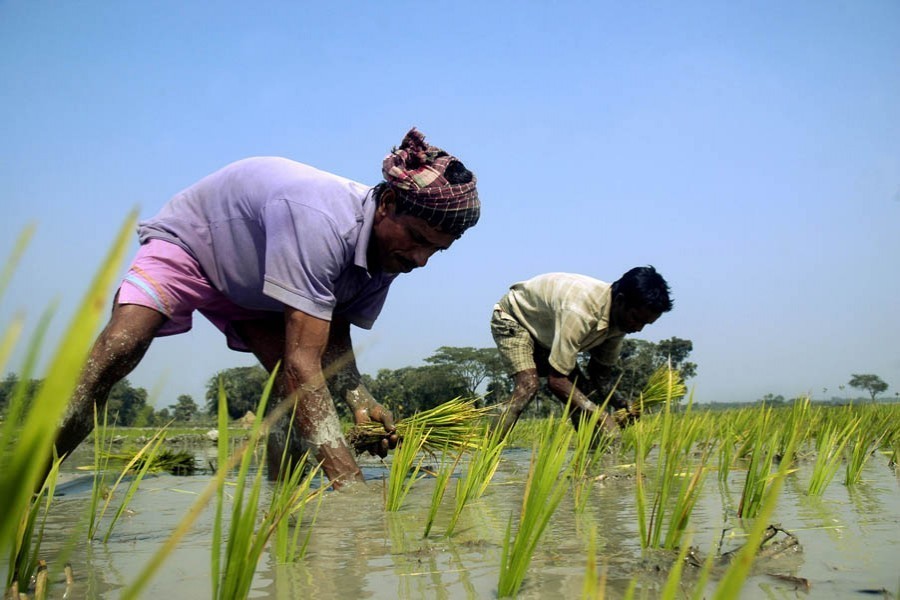Flash floods are wreaking havoc with standing Boro crop in the haor areas of Mymensingh and Sylhet division at the moment. Known as granaries of the north-eastern region of the country, the haor belt comprising vast swathes of low-lying crop lands in Sunamganj, Kishorganj and Netrokona suffer flash flooding almost annually. What is intriguing is that despite the onslaught almost every year in late March or early April, a permanent solution to this pre-monsoon flooding is nowhere in sight; rather the approach to this avoidable calamity is half-hearted and without a sense of direction.
Every year, it is only when heavy rainfall in the upper regions of neighbouring India keeps flowing downstream crushing on the not-so-well-maintained flood embankments that the authorities sit up, allowing the suitable time to slip out of hand. This year, too, the situation is feared to take a disastrous turn as reports pour in about flood waters making it to the crop fields as flood embankments have either collapsed or cracked in many points. According to a report published in the FE quoting UNB, Boro crops on 500 acres land of haor areas in Khalijuri upazila of Netrakona district went under water due to the onrush of hill waters. Already 1,013 hectares of land have been damaged, according to upazila agriculture officials. It is feared that if the situation continues for one more week, i.e., till the middle of April, 25,000 hectares of crop land will be submerged. The onrush of water due to collapse of embankment at some critical points under Dharmapasha upazilla of Sunamganj district is more concerning as it might take a very heavy toll on standing crop. The Boro crop in these areas is not even near-ripe at this stage, so early harvesting makes no sense.
The obvious question is, why were the embankments not repaired, particularly at the risk-prone points well in time? Given the almost inevitable nature of early flooding in the haor areas, it is indeed a round-the-year job of the BWDB (Bangladesh Water Development Board) to work on the maintenance of the embankments. In this connection it may be noted that years ago a project titled 'Pre-monsoon Flood Protection and Drainage Improvement in Haor Area' was taken up to particularly address the situation in the haor belt of greater Sylhet and Mymensingh. Since the haor belt is highly vulnerable to flash floods and there are some unique features, too, in the way floods affect the livelihood of millions of people living in the areas, the aforesaid project was supposed to be a milestone in controlling flood waters. It is not known what happened to the progress of the project.
Now that the situation is taking a bad-to-worse turn, as the water level is reportedly rising with more and more wide cracks and fissures on the embankments letting flood waters into crop fields, the situation calls for emergency measures. The authorities should be well aware of this. As for a lasting solution to the recurrent havoc, much has been said and many failed attempts taken for decades. Is it not time that millions living in the haor belt reliant on a single crop should get due attention as part of the government's priority agenda?


